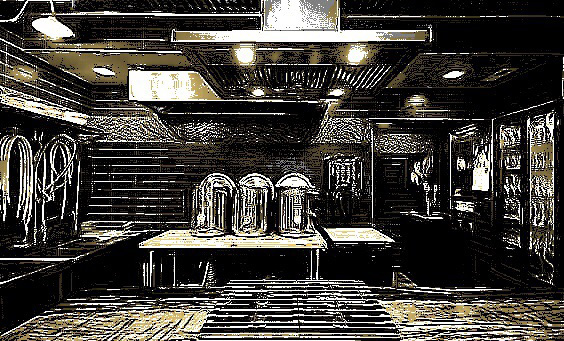 Remodel Your Kitchen into Your Personal Beer Heaven
Remodel Your Kitchen into Your Personal Beer Heaven
Now, a full-scale remodel isn’t something most people can pull off on their own, but I know you’re not most people. You don’t just want to buy beer, you want to make your own. You like getting your hands dirty and getting down to the nitty-gritty so you can tinker with it yourself, and make sure you get your kitchen, and beer, exactly how you want it. You don’t need me to tell you what to build, you’ve had your dream set up in your head ever since you started brewing, but maybe I can give you some tips and hints that will help you along the way.
Tip #1: Electric Brewing
Most people who get into home brewing start by boiling their concoctions in a pot on the stove. However, as anyone who’s ever had a brew boil over on them can attest to, there are more than a few problems with that set-up. The first is that it’s difficult to regulate the temperature of your brew, which can lead to inconsistent results at best, at worst it can create a huge mess in your kitchen. On top of that, it’s difficult to cook to any real quantity.
People get around this by using propane rigs in their garage, or worse, on their porch. While this allows you to cook larger batches (and makes barbecues way more fun) you still end up with temperature control issues, and then your brewing is subject to changes in the weather. However, electric brewing has changed all that. Now you can brew large batches inside with exact temperature control. Kal Wallner gives you step-by-step guides to setting up your own electric brewery, and it’s definitely worth the investment for any serious hobbyist.
Tip #2: Shelving Space
Home brewers acquire a lot of stuff that goes along with the hobby. Trying to find space in your kitchen to accommodate all this stuff is difficult, especially if, like me, your cupboards are bursting already. However, if you get creative and think vertically, you can almost always find a few more places to put your equipment. For a true, blue, do-it-yourselfer, making shelves out of a hardwood like oak isn’t too tall of an order. But, depending on your kitchen, stainless steel shelves might better suit your space. If your kitchen or brew room has drywall, be sure to find a stud to attach the shelves to, as all that equipment can be too heavy for drywall to support.
Tip #3: The Kegerator
Getting a kegerator is the way to really step your brew-game up a notch. Though they can be expensive, with some searching you can pick one up for around $400. If you have an old mini-fridge, you can even pick up a kegerator conversion kit for about $200. The best place to put one would be to hide it in a cabinet. Or you can rip the cabinet out altogether, and leave your passion on display for all to see. Bore a hole through your countertop with either diamond or carbide hole borers (depending on your counter top, if it’s stone, use a diamond drill bit) so that you can pop the tap up through the counter, and have your favorite home brew ready to go. Seal the hole around the tap with caulk or silicon, and you’ll have the best taproom in town.
Tip #4: Demolition and Destruction
Now, before you go charging through your kitchen with a circular saw and a sledgehammer, there are several things you need to consider when doing any demolition. The first is safety. Always, always, always, wear the proper eye and hand protection when working with tools and pulling apart walls. It doesn’t matter if you’ve done it a hundred times before, it only takes one mistake for you to lose an eye. If your kitchen has plaster or drywall that you plan on taking down, a respirator mask can stop you from hacking up lung after you’ve inhaled all that dust. A sturdy pair of steel-toed boots isn’t a bad idea either. If your house was built in the 80’s or before, and you find insulation or ceramics that have unsure origins, get them tested for asbestos. The mineral isn’t harmful until it’s disturbed, but if you start pulling it apart, it will fill your house, and it will never really come out.
The second issue is proper removal of materials. Many cities and towns have strict regulation on both the size and weight of what can be thrown out in the trash. If you’re doing a big renovation, it can be worth it to rent a dumpster, but check your city’s zoning laws to see if they require you to have a permit for one. The best option is to hire a junk removal service. They may be a little more expensive, but they’ll make sure any materials you may be removing get disposed of the right way.
 About the Author – Haley Kieser:
About the Author – Haley Kieser:
Haley resides in the valley of the sun. Although an Arizona native, the Midwest is her favorite place to be. Her favorite beer is a West-O Coco Stout from Okoboji, Iowa.
